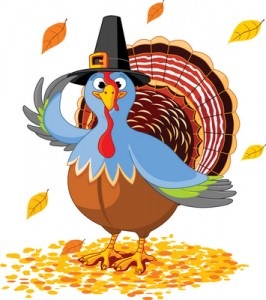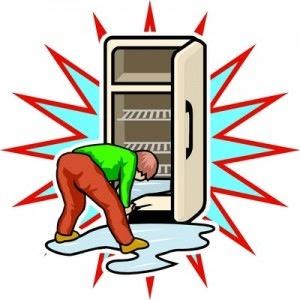 It’s hot outside. When you open your car door after it’s been sitting in the parking lot you’re hit with a blast of heat that seems hotter than an oven.
It’s hot outside. When you open your car door after it’s been sitting in the parking lot you’re hit with a blast of heat that seems hotter than an oven.
The Temperature Rises Quickly Inside A Car
The temperature rises quickly inside a closed car — even when it’s only moderately warm outside.
A study found that at 9AM (in some very hot place!) when the outside temperature was 82 degrees, the temperature inside a closed car was 109 degrees. At 1:30PM, it was 112 degrees outside and 124 degrees inside a closed car.
Cracking the windows helped, but only a little. At 10AM, with four windows cracked, it was 88 degrees outside but 103 degrees inside the car. At 2PM at 110 degrees outside it was 123 degrees inside.
None of these are safe conditions for living creatures, and not for keeping fresh and prepared food in your car, either.
What About The Food You’re Taking To A Picnic?
Pity the poor picnic fixins’ you just bought – or the take-out food you just picked up — sitting in extremely hot temperatures in the back of your car. Boxed food might be fine, but meat, dairy, cut food like fresh fruit, salads, and prepared foods — not so good.
Most bacteria don’t go crazy below 40°F or above 140°F. But the temperature range in between, known as the “Danger Zone,” is where they multiply rapidly and can reach harmful levels. A single bacterium that divides every half hour can result in 17 million offspring in 12 hours!
Raw meat and poultry may contain bacteria that can cause food borne illnesses, and sitting in the temperature danger zone can cause those bad guys to multiply dramatically. Meat and poultry have to be cooked to destroy bacteria and should be kept at temperatures that are either too hot or too cold for these bacteria to grow.
Picnic Food And Temperature Control
To prevent bacteria in food from rapidly multiplying which leads to food borne illness, food has to be kept at certain temperatures to prevent the growth of food borne bacteria. The key: don’t let your picnic food stay in the “Danger Zone” (between 40° F and 140° F) for more than 2 hours, or only for one hour if the outdoor temperature is higher than 90° F.
Perishable food can stay safely unrefrigerated for two hours if the air temperature is less than 90 degrees – and only for one hour if the temperature is 90 degrees or higher.
Keep hot foods hot: above 140°F. Keep cold foods cold: below 40°F.
Remember to include preparation, storage, and serving time in determining how long food has been out of the fridge or off the heat.
Transporting, Preparing, And Serving
To prevent food borne diseases, food safety is crucial both when you transport your food and when you prepare and serve it.
Transporting Your Food
- Think about the type of food you’re buying. If you have perishable items do what you have to do to keep hot food hot and cold food cold.
- Think about your route and how many errands you have to do. Stop to buy beer and paper plates before you pick up the food — not afterward while it’s baking in the car.
- To be on the safe side, keep a cooler, cold packs, or insulated bags in your car for perishable items. Make sure the cooler hasn’t turned into a portable oven because it’s been sitting in the car for so long.
- Be certain that raw meat and poultry are wrapped securely to prevent their juices from cross-contaminating other foods and dripping on fruit and veggies that you’ve already washed.
- Buy a bag of ice if you need to for keeping cold stuff cold and frozen stuff frozen or bring some frozen gel packs with you.
At The Picnic Site
- Food spoilage and cross-contamination are major issues when preparing and eating food outdoors in warm weather — especially when you’re at a remote site (like a camp or park) without a kitchen.
- How will you keep things clean – not just the food, but the platters, utensils, and your hands? Is there a source of potable (drinking) water that you can use for cooking and cleaning? You don’t want to use water that’s not safe to drink to wash your food or utensils. If there isn’t, bring water or pack clean, wet cloths, moist towelettes, or paper towels for cleaning your hands and surfaces. Cross-contamination during preparation, grilling, and serving food is a prime cause of food borne illness.
- Wash your hands before and after handling food, and don’t use the same platter and utensils for both raw and cooked meat and poultry.
- Keep hot food hot and cold food cold the entire picnic – keeping food at unsafe temperatures is a major cause of food borne illness. The temperature spikes in direct sunlight so keep coolers in the shade.
- Food shouldn’t be out of the cooler or off the grill for more than 2 hours (one hour when the temperature is above 90°F).
- Perishable and cooked foods like meat, chicken, and mayonnaise-based salads have to be kept cold, too. Keep cold food in the fridge and don’t stock the cooler until right before you leave home. Keep the cooler in the coolest part of the car while you’re traveling. (FYI: don’t stuff the refrigerator because cool air has to circulate to keep food safe.)
- If you have a long trip consider freezing the food and putting it into the cooler frozen and allowing it to defrost (to a cold temperature, not warm) in transit.
- If you bring hot take-out food like ribs or chicken, it should be eaten within two hours of when it was plucked from the store’s steam table. If you buy it ahead of time, first chill the food in your refrigerator and then before pack it in an insulated cooler.
- Pack beverages in one cooler and perishable foods in another so the perishable foods won’t be repeatedly exposed to warm outdoor air temperatures as people keep opening the cooler for drinks. A full cooler will hold its cold temperature longer than one that’s partly full so pack plenty of extra ice or freezer packs to maintain a constant cold temperature.
- Throw out any perishable foods from picnics or barbecues that have been kept out too long or not adequately chilled or heated. “If in doubt, throw it out.”

